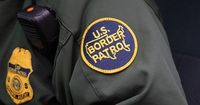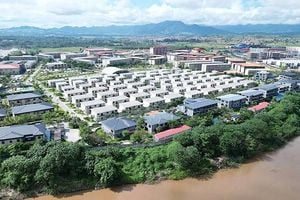The Trump administration’s immigration crackdown has intensified yet again, with new operations targeting major U.S. cities far from the nation’s borders. This week, both San Francisco and New York City found themselves at the center of sweeping federal enforcement efforts, igniting fierce debate, political resistance, and public protest.
According to CBS News and The San Francisco Chronicle, preparations are underway to deploy a team of Border Patrol agents to the San Francisco area, with operations possibly beginning as soon as this week. The agents are expected to stage at the U.S. Coast Guard base in Alameda, just 15 miles from downtown San Francisco. While the exact start date remains in flux, federal officials told CBS News that the plan is imminent. The Department of Homeland Security (DHS), which oversees Border Patrol, Immigration and Customs Enforcement (ICE), and the Coast Guard, confirmed the focus of these efforts: “DHS is targeting the worst of the worst criminal illegal aliens—including murderers, rapists, gang members, pedophiles, and terrorists—in cities such as Portland, Chicago, Memphis and San Francisco. As it does every day, DHS law enforcement will enforce the laws of our nation.”
The face of these operations is Border Patrol commander Bovino, who has recently led similar crackdowns in Chicago and Los Angeles. Bovino’s leadership has become synonymous with the Trump administration’s aggressive approach to immigration enforcement, which has expanded well beyond the nation’s borders and into the heart of Democratic-led cities. Earlier this year, Bovino oversaw controversial arrests at worksites and public spaces in Los Angeles, and more recently, in Chicago.
President Donald Trump himself has been vocal about these plans. In a Fox News interview aired over the weekend, he declared, “We’re going to go to San Francisco. The difference is I think they want us in San Francisco.” The statement, characteristically blunt, was met with immediate pushback from California officials and local leaders.
California Governor Gavin Newsom, a Democrat, was quick to denounce the administration’s tactics in a video posted on social media Wednesday. “He sends out masked men, he sends out Border Patrol. He sends out ICE, creates anxiety and fear in the community, so that he can lay claim to solving for that by sending in the Guard in the first place,” Newsom said, accusing the president of manufacturing fear for political gain.
San Francisco Mayor Daniel Lurie echoed those concerns, pledging that local residents would protest peacefully if the Trump administration employed what he called “un-American tactics to target immigrant communities” in the area. “This federal administration wants to divide us, but we know San Francisco is strongest when we come together to stand up for each other and our values,” Lurie stated, emphasizing the city’s tradition of unity and resistance.
Representative Nancy Pelosi, whose district covers much of San Francisco, issued a strongly worded statement: “Broad sweeps that target families and terrorize law-abiding residents betray our nation’s values and waste resources that should focus on real threats to public safety.” She characterized the planned mass immigration raid as “an appalling abuse of law enforcement power.”
Meanwhile, on the opposite coast, New York City experienced its own high-profile immigration raid this week. On Tuesday, October 21, federal agents descended on Canal Street, a bustling Manhattan thoroughfare famous for its street vendors and bargain shopping. According to Reuters, the operation targeted street vendors, many of whom are African immigrants. The Department of Homeland Security reported that nine individuals from Mali, Senegal, Mauritania, and Guinea were arrested, some of whom had prior criminal records. Four others were taken into custody for allegedly assaulting law enforcement, and another for obstruction of justice.
The raid was met with immediate outrage and resistance from the local community. Protesters clashed with masked federal agents in the street, and accusations of rough treatment and indiscriminate arrests quickly surfaced. Democratic Representative Dan Goldman, whose district includes Canal Street, said, “Dozens of masked federal agents stormed Lower Manhattan, roughing up protestors and indiscriminately arresting people.” He also noted that his office had helped secure the release of four U.S. citizens who were detained by ICE during the operation.
New York State Attorney General Letitia James responded by urging the public to document federal immigration operations. On Wednesday, she announced that her office would review photos, videos, and other evidence submitted through a new “Federal Action Reporting Form.” In her statement, James emphasized, “Every New Yorker has the right to live without fear or intimidation.” This effort, she said, was part of a broader push to hold federal agencies accountable and protect the civil rights of residents.
The move is part of a wider Democratic resistance to the Trump administration’s immigration policies. U.S. Representative Robert Garcia of Los Angeles announced plans to launch an online site for tracking ICE activities, encouraging the public to record and report federal operations. These initiatives follow the administration’s decision in March to dismantle DHS offices responsible for monitoring civil rights abuses, a move justified as part of government downsizing but widely criticized by Democrats and immigrant advocacy groups.
The political tensions surrounding these raids have been fueled, in part, by social media campaigns. The San Francisco Chronicle reported that more than 100 federal agents were being sent to San Francisco, citing an unnamed source. In New York, the Canal Street raid came just days after pro-Trump influencers posted videos on X (formerly Twitter) calling attention to African immigrants selling goods on the street. Savanah Hernandez, one such influencer, posted on October 19, “I don’t know that ICE officials saw my post. However, the White House has been very responsive to on the ground reporters who have utilized X to share their stories.” The impact was immediate; by Wednesday, Canal Street was largely empty of its usual street vendors, according to a Reuters witness.
The Department of Homeland Security, for its part, has dismissed criticism of these operations. Spokesperson Tricia McLaughlin called Attorney General James’s oversight effort “obstruction of justice.” The administration insists that its focus remains on apprehending serious criminal offenders, a claim echoed in official statements but questioned by local officials and advocacy groups who argue that the raids sweep up many immigrants with no criminal records.
As the Trump administration ramps up its immigration enforcement in cities like San Francisco and New York, the political and social divide over these tactics continues to widen. While federal officials maintain that they are targeting dangerous criminals, critics argue that the broad sweeps and public displays of force are designed to intimidate communities and score political points. The coming days will reveal whether public protest and legal challenges can alter the course of these high-stakes operations, or if the administration’s approach will become the new norm for immigration enforcement in America’s urban centers.
For now, both coasts wait and watch, as the debate over immigration, law enforcement, and civil rights plays out in the nation’s streets and city halls.




